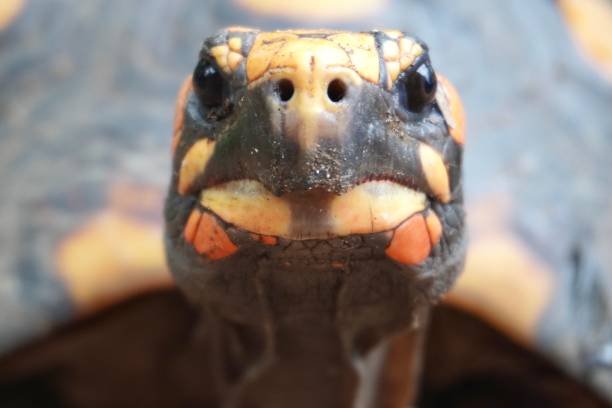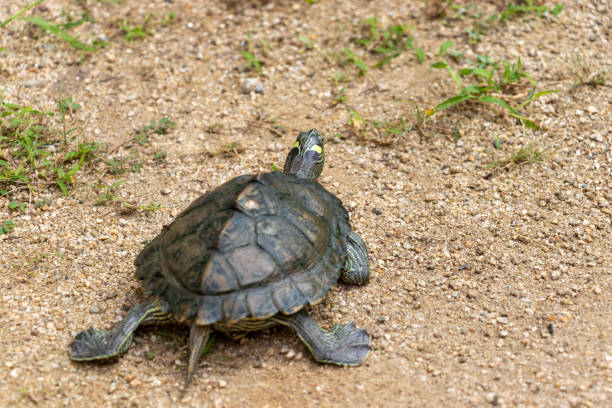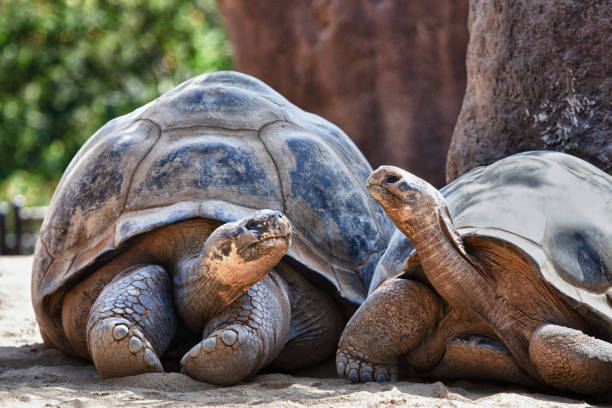Tortoise Behavior and Communication
Although tortoises are not the most social animals they do communicate a lot with each other and their owners. In this article we will take a look at what these communication cues mean and how you can use them with your tortoise.
A gopher tortoise will rub its upper and lower beaks together causing it to make a sound that can be described as clicking, croaking or barking. This is known as stridulation. It is usually done when it is eating and may indicate the presence of other tortoises.
Body language
A tortoise’s body language is a huge part of its communication. It is able to communicate through body language even if it cannot produce any sounds. Its body posture, tail movements, head bobs, and nose touching are ways that it can convey certain messages.
These signals are often used during mating, as well as when fighting for territory or a mate. A male turtle might bob its head and rub its neck together in a mating ritual, while territorial rivals may circle the female, ram her shell, or bite her.

Tortoises also make use of the visual aspect of their communication. They can tell if they are being watched by another tortoise, and will cower in a submissive or hiding pose depending on the outcome of a fight. They can also remember the results of previous fights, and may avoid a particular rival in the future.
In addition to these body signals, a tortoise’s mouth can create noises by vibrating the tongue. They can also eat by using the tongue to scrape the food from the sides of the shell.
Sounds
In the wild, tortoises use sounds to communicate with each other. They hiss, cluck like chickens, and produce high-pitched whining noises. Some hiss when they’re nervous, while others hiss in aggression during breeding season when rival males try to flip each other over. Pet tortoises are less likely to hiss when they’re comfortable around their keepers, but some will hiss if they’re picked up unexpectedly or moved quickly.
Tortoises may also bob their heads to indicate interest or disapproval, and they might hiss when they’re hungry. A lowered head, meanwhile, is usually a sign of submission.
Scientists used to think tortoises were completely mute, but a study of 53 different species including turtles, lungfish, caecilians, and New Zealand’s endemic lizard-like tuatara proved that they actually do make sounds. Those sounds are believed to have the same evolutionary origin as the vocalizations of human beings. Further studies of tortoise sounds and their evolution will be needed to understand how they developed.
Eyes
The eyes are a major part of tortoise body language. The turtle’s third eyelid is a thin membrane that can open and close when needed to protect the eyes from foreign substances, such as dust, which could cause irritation. It can also open and close involuntarily to help the tortoise clean its own eyes.
Tortoises use their eyes to detect movement around them and to locate food during the day. They can also see in the dark with the help of special cells that reflect light on their retinas.

When a male tortoise tries to attract a female, it will stick its head out of its shell and bob it in a way that mimics the fluttering of a bird’s wings. It may also moan, circle a female, ram her shell and bite her to demonstrate dominance during mating.
A tortoise’s eyes can tell you a lot about its mood and health. If its eyes look watery or swollen, it means that it is sick or stressed. It’s a good idea to consult with a vet if this happens.
Tail
The tail is an important part of the tortoise’s ability to communicate. It moves slowly and can be used to signify fear or aggression. It can also be used to signal that it’s time to eat or drink water.
Tortoises can be quite territorial, so they’re not afraid to ram another tortoise if necessary. They do this to protect their territory and mate. They will also bang their heads to communicate to other tortoises that they’re in the area and ready to mate.

When a tortoise is displaying aggression it will move its tail faster and harder. It can also twitch and wiggle its head.
Tortoises can become very attached to their tank mates and pals from other enclosures. They may even boop them on the nose. However, if the tortoise feels that its friend has slighted it, it will retract into its shell. If your tortoise does this too often, it’s probably feeling insecure or stressed. It might need more hiding spots or extra space in its tank. It could also be in pain.
Shell
Tortoises are the longest-living land animals in the world, and their shells help protect them from predator attacks. The front of the tortoise’s carapace angles upward, so he can reach higher food plants like cactus pads, for instance. Tortoises that live on arid islands have domed shells that are more similar to their ancestral forms, whereas those on larger, humid islands tend to have saddle-backed carapaces.
Tortilises can send visual and tactile signals through their shells, as well as change their body positioning to communicate. They also can move their heads—kind of like a dance—in mating rituals, or when they want to fight.
Because they live slow and steady lives, tortoises take time to get to know other tortoises—watching them, sniffing the marks they leave behind, and watching their body language. They have incredible memories, too, so if their tort buddy slights them in some way, they will remember and hold it against them for a while. This is one reason why tortoises have a hard time befriending other animals. It’s not that they don’t want to, it’s just that other animals scare them.

